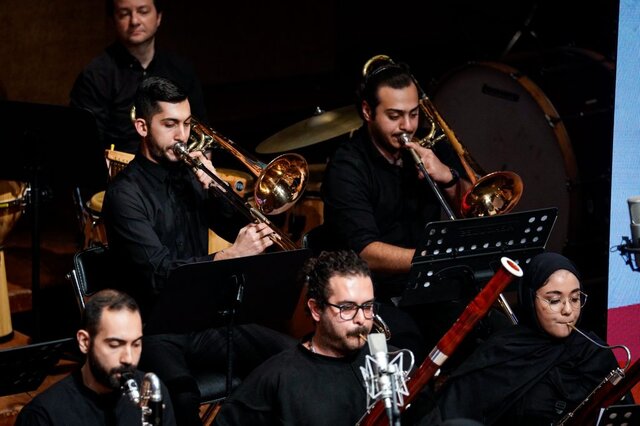
Despite its colorful repertoire and ambitious fusion of global and Iranian sounds, the Rayen Wind Orchestra’s concert on October 15 and 16 at Vahdat Hall struggled with emotional inconsistency and technical flaws, revealing both the promise and pitfalls of genre-blending in orchestral performance.
On October 15 and 16, the Rayen Wind Orchestra, led by Amirhossein Mohammadian, performed a diverse selection of international and Iranian music at Tehran’s Vahdat Hall. Aiming to showcase a wide range of genres, the concert ultimately offered a blend of globally recognized pieces and Iranian songs in a novel format.
The repertoire featured music from renowned international artists like Coldplay and Adele, beloved film scores from The Lion King and Pirates of the Caribbean, as well as Iranian songs performed by vocalist Farid Sadoughifar. Despite the ambition to deliver variety, the emotional and stylistic disparity between pieces created a sense of inconsistency throughout the concert.
While many of the international selections boasted rich, professional arrangements—such as 2001: A Space Odyssey, Gabriel’s Oboe, and medleys from ABBA and Wicked—the Iranian pieces, including Jaye To Khali and Zendegi, felt emotionally and sonically out of place due to their contrasting Eastern character and different arrangement styles. This tension was particularly evident in the performance of Shabhaye Tehran, whose nostalgic and traditional tone clashed with the Broadway-style atmosphere of the preceding Western pieces.
Vocally, Farid Sadoughifar’s performance was marred by technical issues. Problems with microphone handling, stage presence, and vocal technique reduced the overall impact of the Iranian vocal sections. Compared to the orchestra’s instrumentalists, the singing appeared less polished and suffered from noticeable technical flaws.
From a performance standpoint, many orchestral segments were well-executed, but moments of rhythmic instability and slight missteps—especially in the brass and percussion sections—occasionally disrupted the flow. The most pressing issue, however, was the weak sound engineering. The bass guitar was often inaudible, to the point where it was unclear whether it was playing at all during certain passages.
Amirhossein Mohammadian’s conducting was competent in maintaining general cohesion, but the performance indicated a need for greater attention to rhythmic precision and dynamic emphasis in rehearsals.
Overall, despite its shortcomings, the concert had the potential to provide an engaging and entertaining experience for fans of wind instruments and big band music. The presence of such ensembles in Iran’s musical landscape can play a vital role in expanding audiences’ musical tastes and promoting the appreciation of orchestral music. With more refined arrangements and improved technical execution, wind orchestra performances could significantly elevate the country’s orchestral music standards.
Written By Farid Parish
